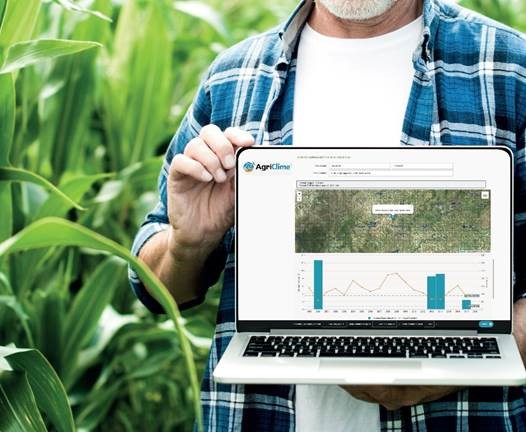
South Africa currently finds itself in the midst of an above-average summer-rainfall season. This is a welcome turn of events, especially for parts of the Eastern Cape that had been ravaged by drought for years. While good rains are usually good news for grain producers, the reality of “too much of a good thing” rears its ugly head when crops end up waterlogged in the fields.
Syngenta, a crop-protection specialist, developed AgriClime several years ago to provide producers with a buffer against the impact of droughts on yield. During the 2020 season, however, abundant rains caused severe and wide-spread damage to dry-bean yields and, in some instances, maize. This prompted Syngenta to also help protect producers against too much rainfall.
Against this background, Syngenta recently adjusted its AgriClime financial solution, offering producers much-needed relief so that they are equally supported in seasons that are either dry or marked by heavy rainfall.
With AgriClime, it is possible for producers to recover a portion of their Syngenta purchases in cash at the end of a season that had either too much or too little rainfall. AgriClime is not crop insurance, but rather a financial solution that uses a weather derivative which allows Syngenta to support the producer against risk of yield losses caused by either drought or waterlogged conditions.
AgriClime gives producers the peace of mind to invest in Syngenta products in the interest of higher yields, knowing that they can count on Syngenta’s support should the season be too dry or too wet. In a Goldilocks year, when rainfall is as close to perfect as possible, producers will benefit from optimal yields thanks to Syngenta’s quality products. In a dry and/or excessively wet year, Syngenta’s support takes the form of a cash pay-out based on the producer’s Syngenta purchases. Regardless of the weather, Syngenta producers always benefit.
AgriClime is a support mechanism for loyal Syngenta customers. However, participation is as easy as becoming a Syngenta customer and registering participating fields on the Syngenta system.
AgriClime is based on specific coordinates in a producer’s field that the system translates into a 5km x 5km quadrant. The average rainfall in that quadrant over the past 20 years is then determined for a specific period within a season (the risk period). The producer selects the risk period upfront, for example, from 1 February to 15 March. – these are more aligned to the dates available to be signed up now.
The producer also chooses to be hedged against either too much or too little rainfall, or both, and the system then calculates each producer’s unique pay-out criteria, e.g., R1 400 for every 1mm above the rainfall pay-out trigger.
The average rainfall is compared to satellite data of the actual rainfall in the quadrant during the risk period. In cases where the actual rainfall was significantly more or less than the producer’s pay-out trigger, a percentage-based pay-out comes into play. Depending on the circumstances, producers can recover up to 27% of their Syngenta crop protection spend should drought or waterlogged conditions, or both, impact yields negatively.
The philosophy that resulted in AgriClime is simple. Syngenta wants producers to always invest in its products with confidence because they know that the company’s support extends beyond crop protection. Financial solutions that enable producers to achieve maximum yield and crop quality also advance the cause of achieving food security.
Producers who are interested in participating in AgriClime, can contact their nearest Syngenta agent for all the details. Terms and conditions apply.








